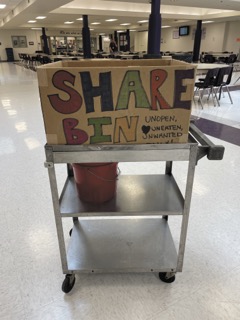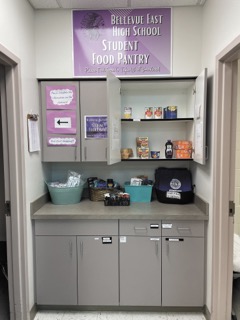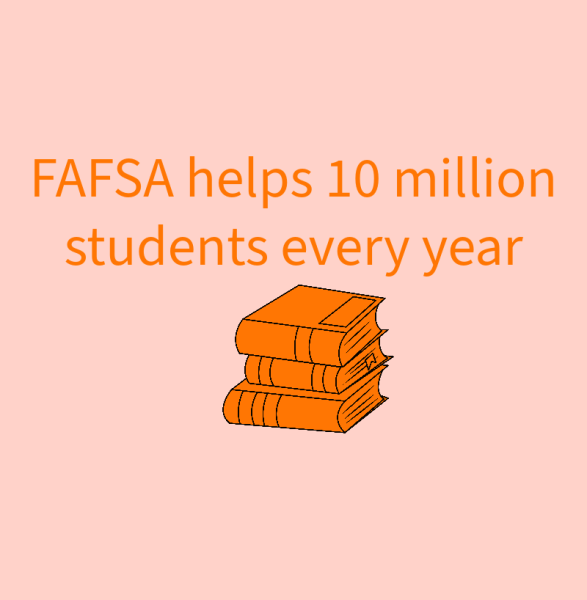East resources battle food insecurity
Rylee Craig Co-Editor in Chief
April 25, 2023

Over the past few years people all over the country are trying their best to survive through the financial consequences and effects that stemmed from the pandemic. One of these effects is inflation, which increases the prices of everything ranging from groceries, gas, vehicles, and so much more.
According to the U.S Department of Agriculture (USDA), the Consumer Price Index (CPI) for all food increased 0.7% from December 2022 to January 2023 (in just a month), and food prices were 10.1% higher in January 2023 than in January 2022. Looking a little closer, The food-at-home (grocery store purchases) CPI increased 0.8% from December 2022 to January 2023, and was 11.3% higher than January 2022.
However this doesn’t stop here; prices of groceries are still predicted to increase again throughout 2023. Grocery price increases can be a huge problem, especially for families of lower income that cannot afford these items anymore. Additionally, the price increases also greatly impact food pantries all over the country.
Many food pantries run off of donations, and if the prices in groceries keep rising, then these donations keep getting smaller and smaller. A lack of donations causes people all over the country who benefit from food pantries to suffer even more.
Throughout the past few years, while in the mix of prices rising, East has implemented different resources for students and families in need of food and living necessities. One  of these resources includes the food pantry in the nurse’s office. Back in November of 2021, the food pantry made its debut, highlighting different canned and packaged foods along with various hygiene products for any student, parents, or staff members in need.
of these resources includes the food pantry in the nurse’s office. Back in November of 2021, the food pantry made its debut, highlighting different canned and packaged foods along with various hygiene products for any student, parents, or staff members in need.
Nurse Kala Brown, who is in charge of the food pantry, said that over the past year and a half the food pantry is still gaining traction since people are still learning about this resource every day. She also said that the need for the food pantry from current students and families is high and continues to grow.
Having this resource at East is a great way for students to receive exactly what they need in order to survive, feel good, and perform at their best. Accessing the food pantry is a very simple process.
There are multiple fliers located all over the school with a QR code. Any student can scan this code and fill out the form. After filling out the form, the student will receive a pass from the nurse’s office to come and access the pantry, taking whatever the student needs for themselves, and/or their family.
Providing students and families with these resources is a way to help out the Bellevue community and East peers in need, especially because the current and future state of the CPI is not looking too good. The East food pantry also runs off of donations, which is one of the main issues holding it back, limiting what it has to offer to students.
“The major things holding the pantry back from being extremely successful is the lack of knowledge of the resources we have and the monetary and product donations. We are always in need of donations and anyone who is willing to can donate,” Brown said.
Another resource that East has offers for students in need of food is the cafeteria Share Bin. The box was first offered to students this school year, after Green Initiative initiated the project.
The Share Bin is for any student who has unopened food items or uneaten food to donate to after lunch. Any student is then welcome to take from the Share Bin any food item they want, as long as they will eat it. Green Initiative sponsor Rachel Charraher originated the idea.
“Last year was the first year I worked lunch duty in the cafeteria. As I was collecting trash from students, I was saddened by how much food waste there was of unopened/uneaten items. I started asking students if I could take the unopened/uneaten food and would then make it available to my students in class. It grew from there into students knowing I would collect their unopened food as well as students knowing I had unopened food,” Charraher said.
Not only is the Share Bin a resource option for students to give back and help peers in need, but it is also for any students who are just hungry for a snack. Having the Share Bin potentially impacts students in many different ways, more than many might think.
“I think it impacts students in a few ways. First, it’s an additional place students can get food, especially if there is food insecurity in their household,” Carraher said. “Second, it is for any student who just might still be hungry and they don’t have to buy additional food. Lastly, I think it helps students be a part of something bigger than themselves. They get to be a part of keeping our food waste down along with providing for others.”
Minimizing food waste can benefit a multitude of students and their families, not just in East’s community, but all over the country. According to an article from South Dakota State University, a report done by the USDA showed that 90 billion pounds of edible food gets wasted and goes uneaten every year.
After that study was done, the Natural Resources Defense Council (NRDC), found that 8% of that wasted food each year comes from institutional and food service settings, including schools. That would mean that schools contribute to about 7.2 billion pounds of food wasted each year.
Charraher said that one of her main goals is to minimize food waste at East as much as possible. She said she is looking into having more Share Bins, and making them part of students’ lunch routine, where every student is aware of how it works and can contribute.
Having resources including the nurse’s food pantry and the cafeteria Share bin help students and families in the East community that are in need through these challenging economic times. By contributing to these resources, people can both give back, and eliminate food waste, solving multiple problems at once.






